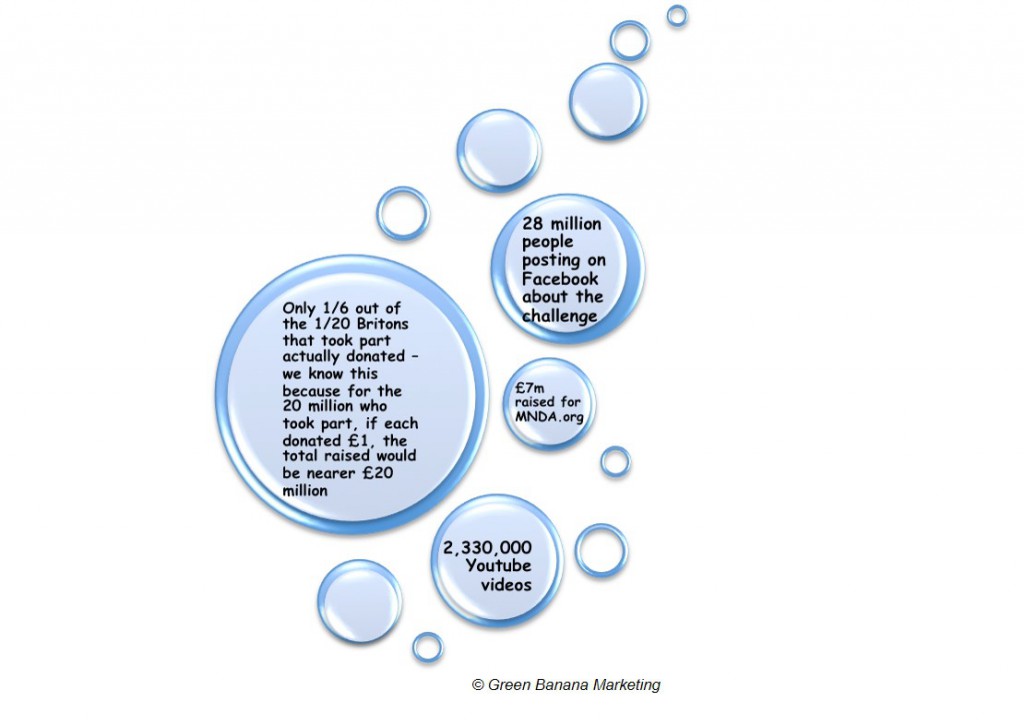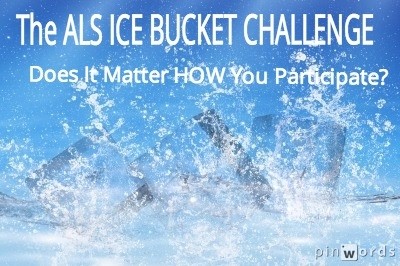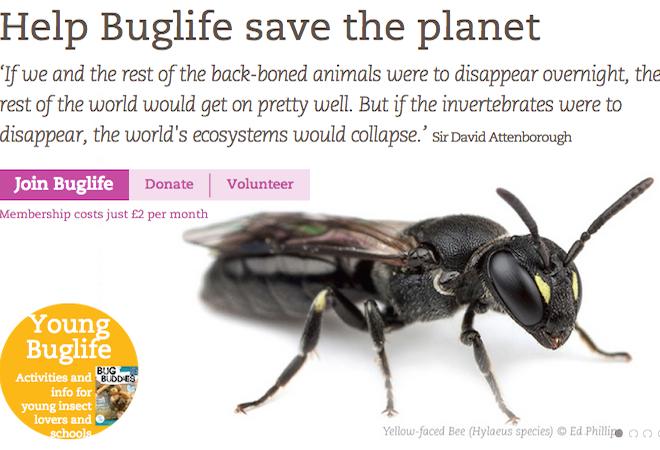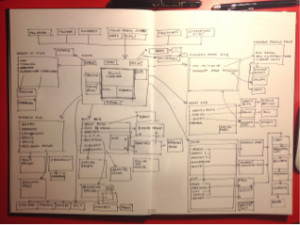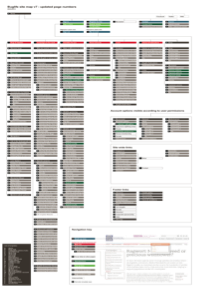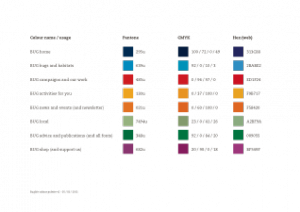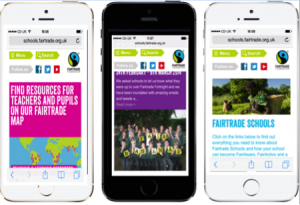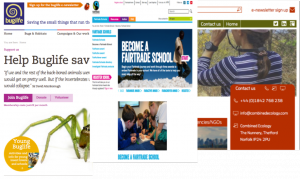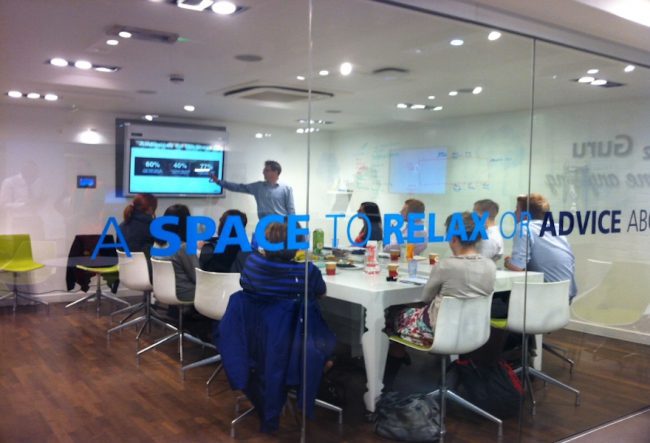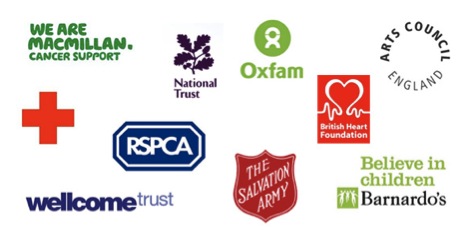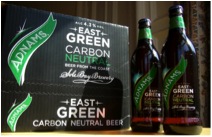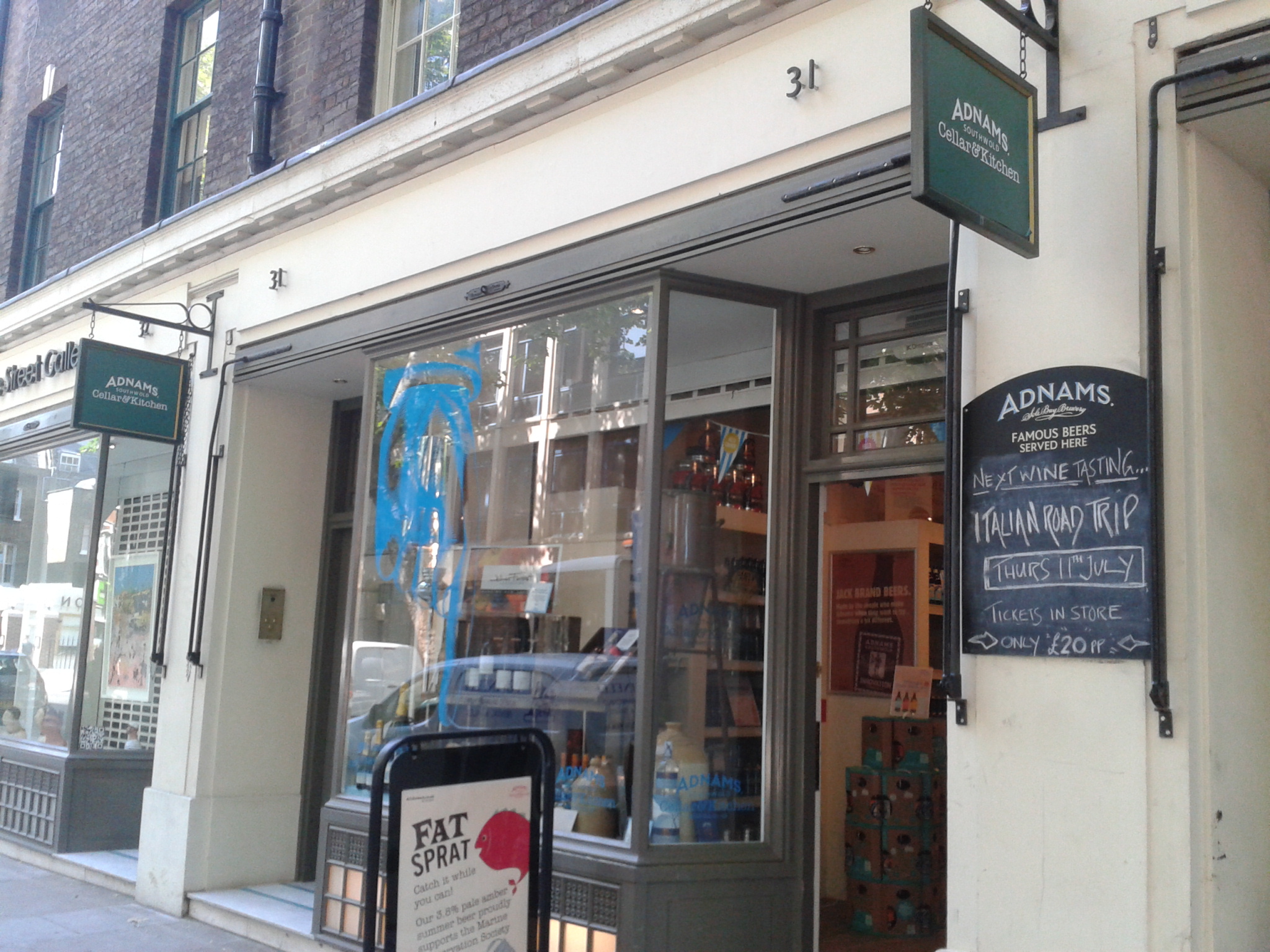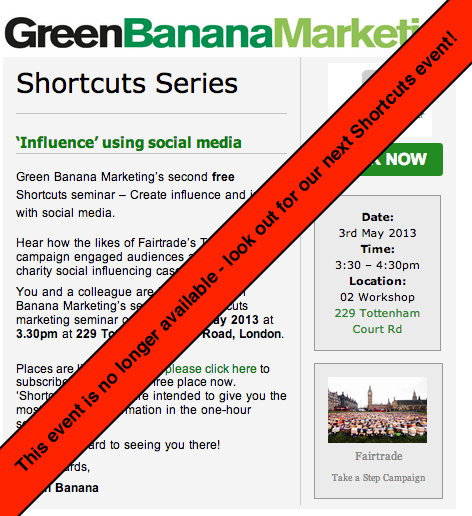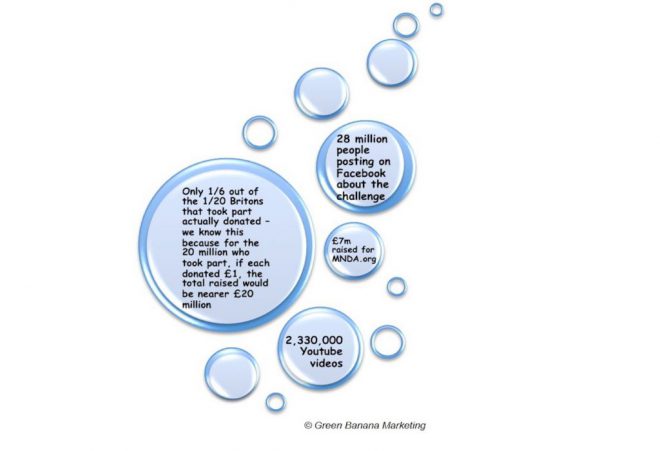
You’ve heard of the ALS Ice Bucket Challenge, which went viral in June but have you heard of Aymotrophic Lateral Sclerosis (ALS) disease? ALS is a motor neuron disease that attacks the nerves in the spinal cord and brain.
ALS is the most common motor neurone disease, which often starts to show signs at the age of 60. There are an average of two deaths per 100,000 people each year in the UK alone and survival from onset of the disease is 3-4 years.
A pretty convincing case for support, which the Ice Bucket Challenge, that originated in the US, aimed to raise awareness and money for this disease,
but how efficient has it been?
The craze caught on with 2.4 million videos related to the ‘IBC’ on Facebook this summer, and a further 28 million people joining the conversation (either in likes, comments or posts) between June 1st and September 30th. ‘Ice Bucket Challenge’ was in the news on average 78 times per day and trending by the end of August; there were more Google searches for this than for all of the searches for ‘Gaza’, ‘Ferguson’ or ‘Iraq’.
Perhaps it was a good antidote to the Malaysian airline tragedy, Ebola virus outbreak, the continued fight against ISIS, and not to mention the passing of Robin Williams and Joan Rivers! But has the feel good factor of taking part been helping charities? MNDA, the Motor Neurone Disease Association (the charity most strongly associated with ALS in the UK), has raised £7m from ice bucket donations, a sum worthy of a half seconds soaking on a warm summer’s day.
But in the context of other previous charity challenges, did ‘IBC’ actually deliver? The ‘no makeup selfie’ for CRUK raised over £8m in just 6 days and ‘Movember 2013’ raised a whopping £20.4m in just one month. Both of these suggest that the ‘IBC’ should have raised significantly more in four months of intensive activity with an estimated 20 million people taking part.
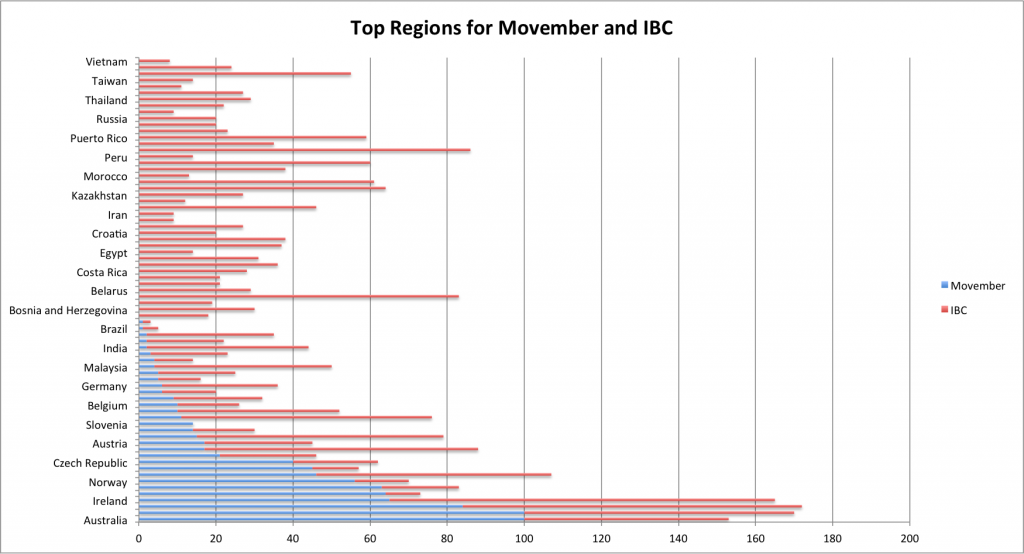 © Green Banana Marketing
© Green Banana Marketing
Number of people involved in Ice bucket challenge and Movember per country (‘000)
The craze is already beginning to freeze over!
How many of the IBC videos actually resulted in donations? The Charities Aid Foundation estimated of the 1 in 6 Britons that have taken part so far, only 1 in 10 have actually donated to a charity. This rings true, for the 20 million who took part, if each donated £1, the total raised would be nearer £20 million.
Thoroughly entertained, but the bottom line is that most of the videos didn’t result in giving to a good cause. And there have been environmental challenges about the amount of water used in the IBCs, particularly the one involving 40,000 litres from a dumper truck.
Overall, the IBC could have been more productive and we think:
1. Although substantial amounts were raised for ALS.org and MNDA, it is disproportionate to the number of people taking part
2. Clarity should have been given around the fundraising mechanic, as many people were confused about what to do
3. A simple branding device might well have helped the participants on either side of the challenge! Also, if the IBC had been a more successful fundraising magnet for ALS, a better-branded mechanic would have drawn less income from other charities, what William MacAskill, Vice President of Giving What We Can, calls ‘funding cannibalism’
4. The campaign has raised awareness for ‘ALS’, but not as much for Aymotrophic Lateral Sclerosis disease – next time participants would benefit from a progress report and a brief summary of the actions taken as a result of their involvement
5. From an environmental point of view, the campaign mechanics could have involved Water Aid, who themselves raised considerable funds on the back of the challenge. Water Aid raised £47,000 in one day – which is 50% higher than it has ever received in a single day before). The should have been a good well thought through partnership, involving other charities as well as, perhaps a utility company.
There are more efficient and environmentally friendly ways to fundraise than the Ice Bucket Challenge; it is definitely fun to watch but may be more of a damp squib than the cool enterprise we first thought. A bit more careful thought at the beginning could have quadruple the income raised for Aymotrophic Lateral Sclerosis and made a real difference. Will IBC ii be back next Summer – we certainly hope so.

